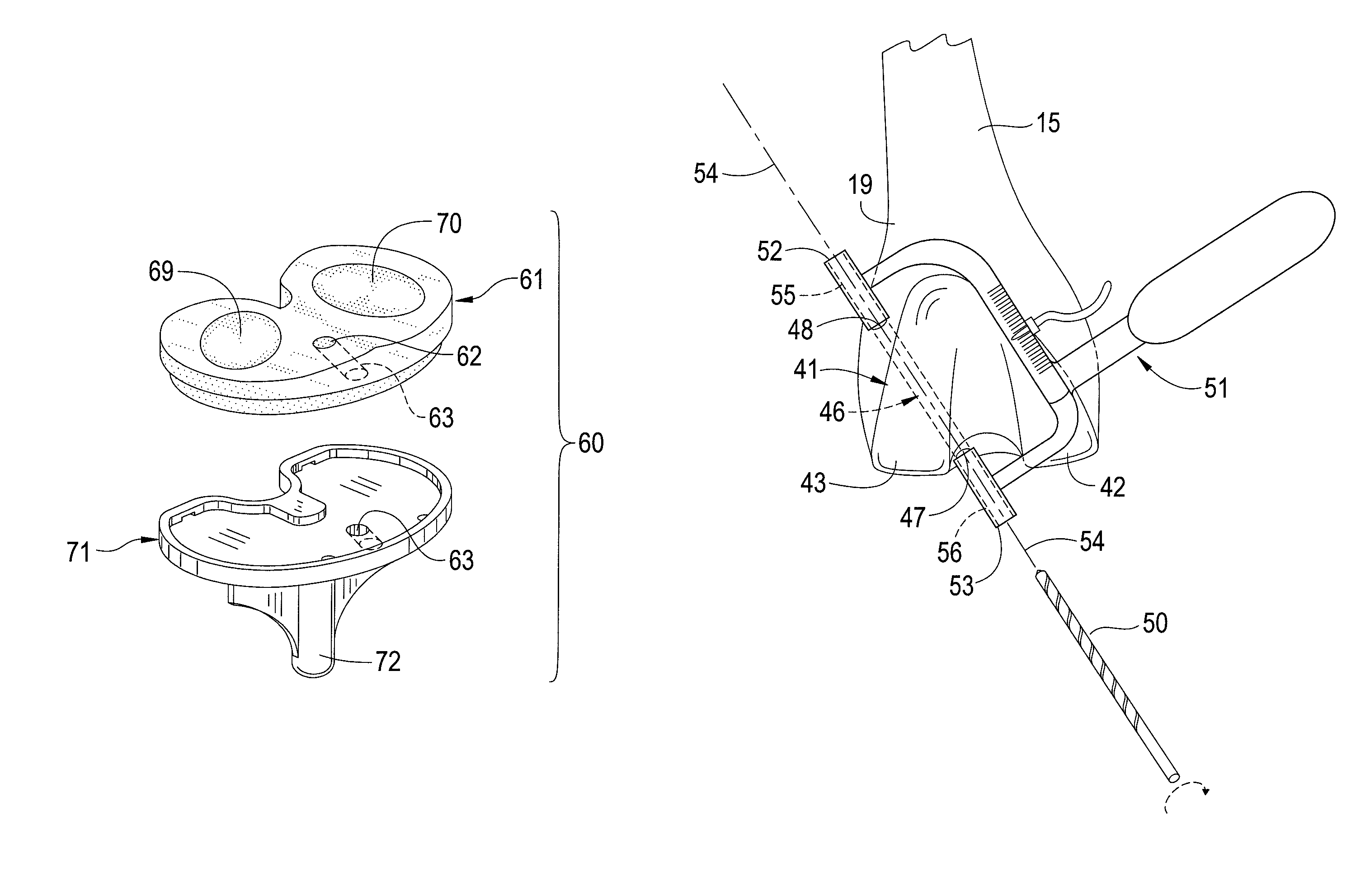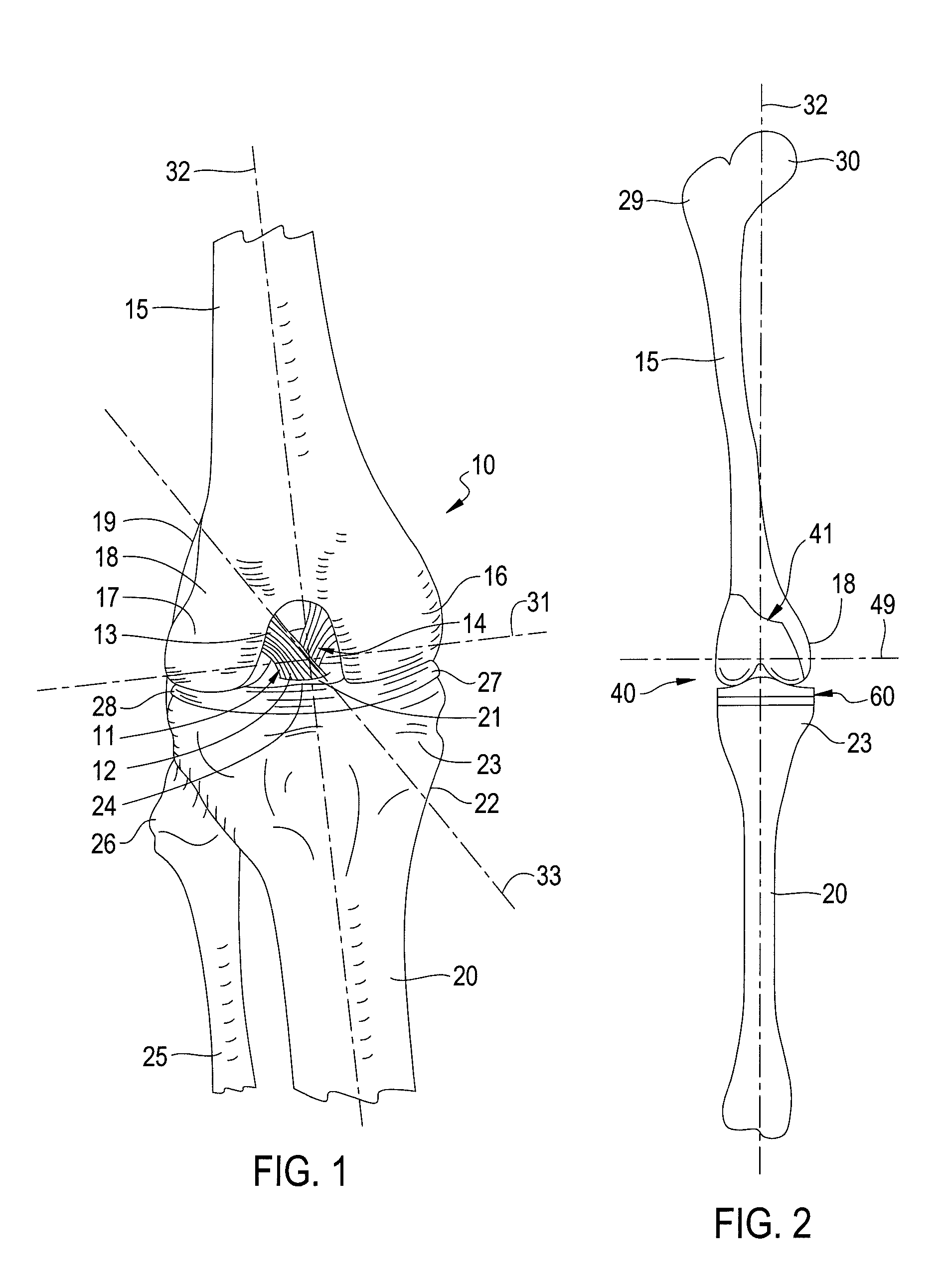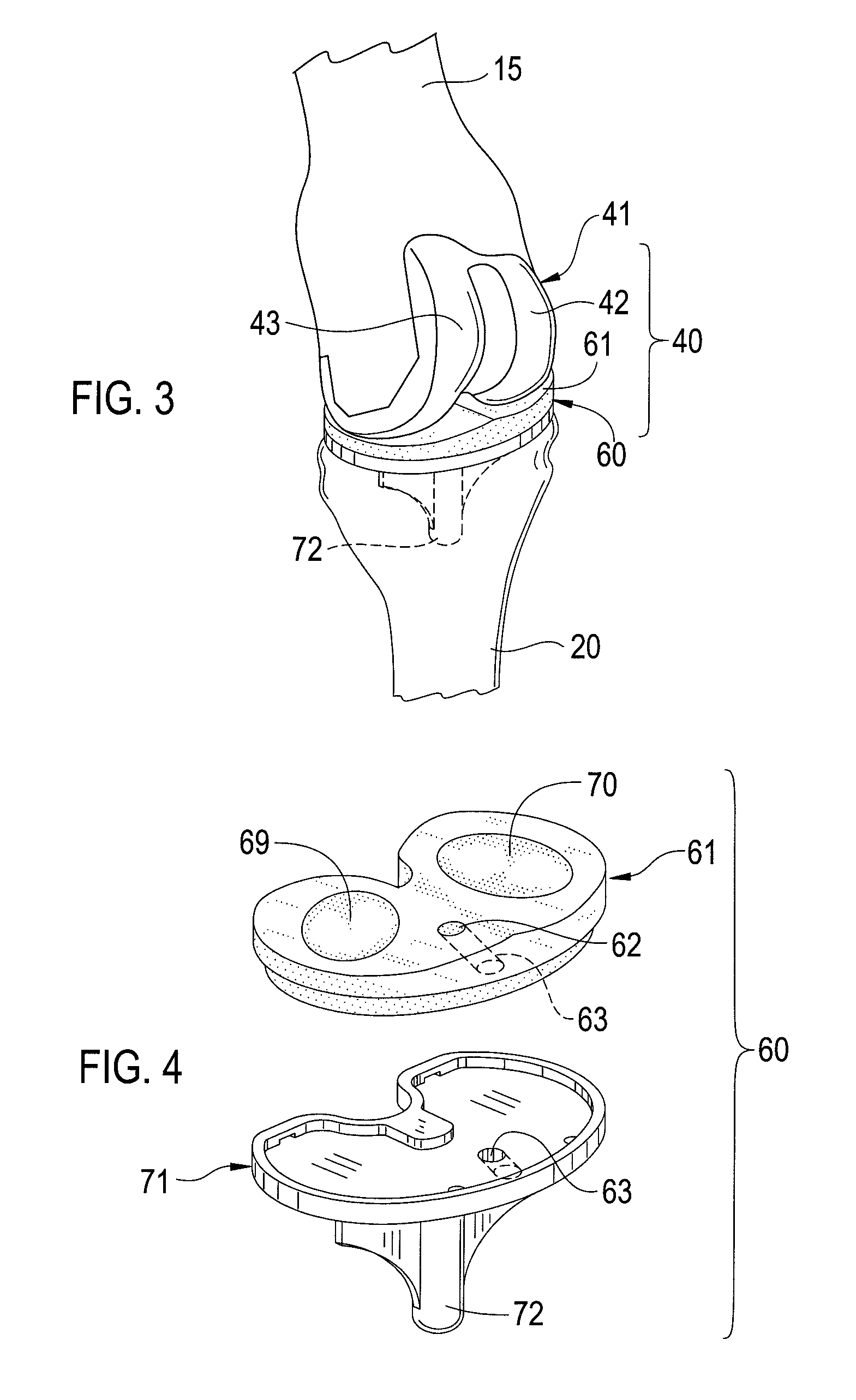Total knee prosthesis and method for total knee arthroplasty
a total knee and prosthesis technology, applied in the field of total knee prosthesis and total knee arthroplasty, can solve the problems of reducing the functional ability of patients to perform activities of daily living, compromising patient's functional ability, and currently available prosthetic knee implants employed for tkr. achieve the effect of extending the tibial apertur
- Summary
- Abstract
- Description
- Claims
- Application Information
AI Technical Summary
Benefits of technology
Problems solved by technology
Method used
Image
Examples
Embodiment Construction
[0022]Referring to the drawings for a better understanding of the function and structure of the invention, FIG. 1 shows a typical patient's natural knee joint 10 prior to the surgical procedure. Illustrated is upper portion 23 of the tibia 20 the upper portion 26 of the fibula 25, the lower portion 18 of the femur 15, the exterior surface 19 of the femur 15, as well as the medial condyle 16 and lateral condyle 17. The anterior cruciate ligament I1 and the posterior cruciate ligament 14 are seen to be present in the knee joint 10. One end 12 of the anterior cruciate ligament 11 is attached to the anterior portion of the intercondylar eminence 21 of the tibia 20, and the second end 13 of the anterior cruciate ligament 11 is attached to the posterior portion of the medial aspect of the lateral femoral condyle 17, thereby defining an axis 33 of the anterior cruciate ligament 11. The posterior cruciate ligament 14 passes upward and forward on the medial side of the anterior cruciate liga...
PUM
 Login to View More
Login to View More Abstract
Description
Claims
Application Information
 Login to View More
Login to View More - R&D
- Intellectual Property
- Life Sciences
- Materials
- Tech Scout
- Unparalleled Data Quality
- Higher Quality Content
- 60% Fewer Hallucinations
Browse by: Latest US Patents, China's latest patents, Technical Efficacy Thesaurus, Application Domain, Technology Topic, Popular Technical Reports.
© 2025 PatSnap. All rights reserved.Legal|Privacy policy|Modern Slavery Act Transparency Statement|Sitemap|About US| Contact US: help@patsnap.com



